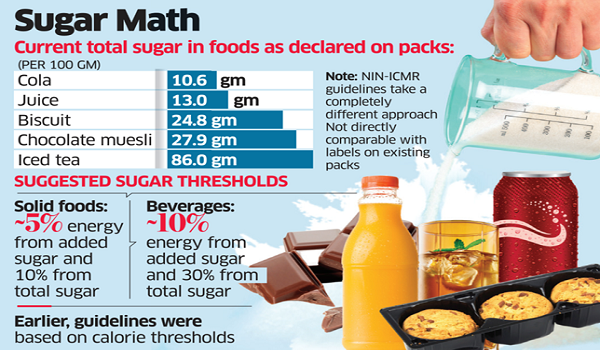The National Institute of Nutrition (NIN) and the Indian Council of Medical Research (ICMR) have introduced sugar content thresholds for packaged foods and beverages for the first time, marking a significant shift in dietary guidelines after 13 years. This move could impact popular products like soft drinks, juices, cookies, ice creams, and cereals, both online and on shelves.
The new guidelines recommend that solid foods should derive no more than 5% of energy from added sugars and not exceed 10% from total sugars. For beverages, the limit is set at 10% of energy from added sugars and 30% from total sugars, including naturally occurring sugars in fruit juices and milk.

Packaged food companies have expressed concerns over the practicality of these guidelines. Executives argue that if the government enforces these recommendations, most brands will need to reformulate their products. “The guidelines follow global best practices but have not been formulated in consultation with major industry players,” said a senior executive from a leading food company.
The introduction of these thresholds comes amidst growing health concerns over rising obesity and diabetes rates and recent controversies over the sugar content of products like Bournvita and Cerelac. Despite industry pushback, health advocates emphasize the importance of informing consumers about dietary recommendations to foster healthier choices.
Executives from the food industry plan to make joint representations to ICMR and NIN within the next ten days, arguing that the guidelines are theoretical and impractical. “It would be unreasonable to expect us to change formulations entirely,” stated a top beverage company executive. “We already provide sugar content information on our packaging.”
As discussions continue, the push for stricter sugar regulations highlights the ongoing struggle to balance public health concerns with industry capabilities. The revised guidelines represent a step towards addressing India’s dietary challenges, but further collaboration between regulators and industry stakeholders is essential to achieving practical solutions.


